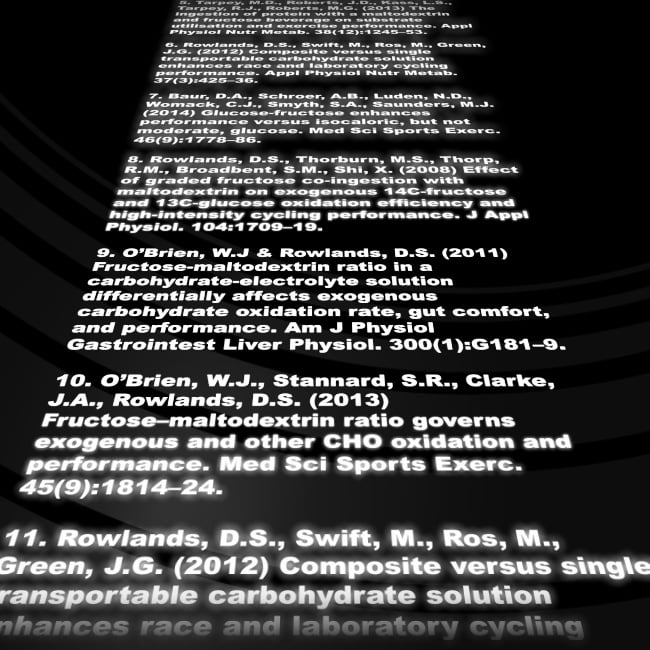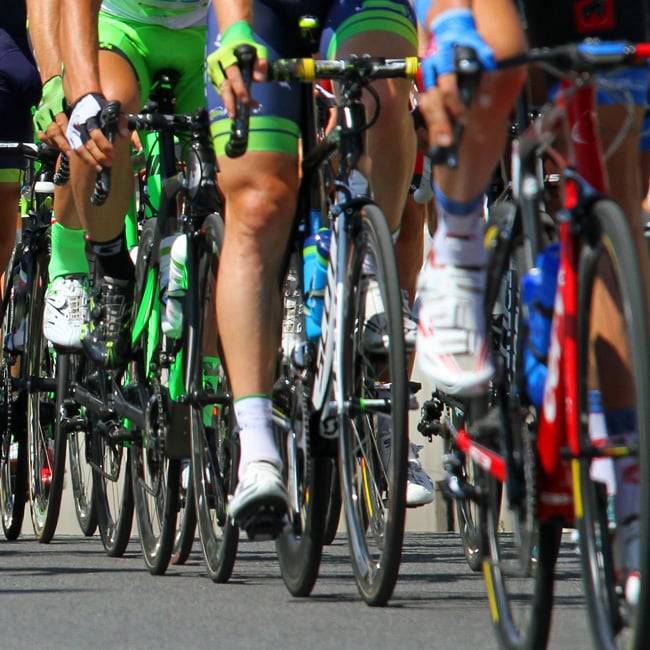Are nutrition brands telling you the truth about the performance of their products?
We hope that we’ve got your trust. We certainly make every effort to be as transparent as possible with regard to training, fuelling and recovery practices. It’s key to our philosophy that our customers make purchasing decisions based on a sound understanding of how and why our products work along with the comfort of knowing that any claims we make are backed by proper independent published research.
Where does education finish and marketing or even dishonesty start? It’s potentially a bit of a tightrope – we understand that, because our plan has always been to make TORQ products as functional and desirable as we can in every possible way, so even the use of cool branding and photography could be seen by the purist as persuading someone to choose our brand over another. Even shouting about the benefits of our product over another is marketing really, but what about if you’re suggesting that your product can do something that it can’t? Surely this is overstepping the mark?
We produced the following article a couple of months ago:
This article explains how energy/fuelling products containing only glucose derivatives have been proven to be able to deliver no more than 60 grams of carbohydrate per hour. The very short animation below demonstrates this limitation. The SGLT1 transporter which carries glucose across the intestinal wall becomes saturated at approximately 1 gram per minute, so it doesn’t matter how much glucose you consume, SGLT1 is the bottleneck:

Examples of glucose derivatives include glucose, dextrose and maltodextrin for instance and many brands use only these or use very little fructose. The article also explained how combining glucose derivatives with fructose, called ‘multiple-transportable carbohydrates’ allows the delivery of 90 grams of carbohydrate per hour because fructose utilises an independent carrier called ‘GLUT5’. To understand this concept, watch this animation:

We recently published an article which reviewed the latest research into multiple-transportable carbohydrates and some studies have demonstrated absorption and oxidation rates even higher than 90 grams per hour. All of these studies are peer-reviewed and published in reputable journals. Published studies are vetted by a group of academic peers to confirm their authenticity and are the closest you will ever get to real proof. Here’s the article we wrote:
So, what’s the point of this current article? Well, firstly it’s to do our best to confirm to you that TORQ does its research properly and produces the best performance nutrition products in the world. Secondly, it’s to ask you to question any nutrition company and ask them to justify their claims if you’re not sure you believe them. If their claims aren’t backed by a body of peer-reviewed published research, what proof do you have that the products will do what they say they will do? Some companies cite ‘University Studies’ which simply mean nothing unless the results have been published in a proper research journal. Others like to say ‘Research suggests…’ without providing the actual research. Also, remember that the more published research there is to support a claim, the more likely it is that it is true.

It has been our intention to write this article for some time, but this has been hastened because of recent claims by other brands that their mainly glucose-based energy products might be capable of functionally delivering more than 60 grams of carbohydrate per hour. We feel this is over stepping the mark, misleading to the public and not based on any scientific evidence at all. Exaggeration isn’t unique to the topic of fuelling, there are plenty of unsubstantiated claims out there, but since we have been at the cutting edge – utilising the latest multiple-transportable carbohydrate research, this topic is very close to our hearts.
In another article we published recently, we explained how much of a difference it makes to your performance if you’re able to consume, absorb and oxidise 90 grams of exogenous carbohydrate per hour and there are some very significant benefits. These benefits are only realised if the formulation is correct though and products containing only maltodextrin, glucose, dextrose or combinations of these carbohydrates will NOT deliver more than 60 grams per hour. Please take the time to read the following article:
If you’re reading this because you use TORQ anyway, hopefully this just serves as further assurance that we do our homework and our intentions are never to mislead. If you’re not currently using TORQ, all we would suggest is that if the company whose products you use makes such a claim or even suggests that their products are capable of delivering more than 60 grams of carbohydrate per hour, simply ask them to justify it. Furthermore, if they were to have high profile athletes working with them that suggest that they are consuming more than 60 grams of carbohydrate per hour, surely this would demonstrate a disconnect between the athletes and the nutritional sponsor and depending on the professionalism and knowledge of the athletes concerned, might even suggest that they are using different products to the ones the public think they are. All we suggest is that you take your time and make your decisions based on fact and understanding, not just what you’re told or is sold to you.
Are we being a bit touchy and pedantic? We think not. For an endurance athlete, the speed/rate of carbohydrate delivery literally defines an energy product. There are significant performance gains associated with being able to process higher carbohydrate intakes and there’s a direct relationship between the speed of carbohydrate absorption and the time the energy product is in your digestive system for (fast absorption = reduced stomach discomfort). We take the purity and performance of our products very seriously and it’s not in our or your interests for this deception to occur.
If you have any questions about this article, or any of TORQ’s products and services, please don’t hesitate in contacting us at enquiries@torqfitness.co.uk or phone 0344 332 0852.
Please see list of references below supporting the formulations of our products:
1. Stellingwerff, T & Cox, GR. (2014) Systematic review: Carbohydrate supplementation on exercise performance or capacity of varying durations. Appl Physiol Nutr Metab. 2014 Sep;39(9):998-1011.
2. Wilson. PB., Ingraham, SJ. (2015) Glucose-fructose likely improves gastrointestinal comfort and endurance running performance relative to glucose-only. Scand J Med Sci Sports. [Epub ahead of print].
3. Currell, K & Jeukendrup, A.E. (2008) Superior endurance performance with ingestion of multiple transportable carbohydrates. Med Sci Sports Exerc. 40(2):275–81.
4. Triplett, D., Doyle, D., Rupp, J., Benardot, D. (2010) An isocaloric glucose-fructose beverage’s effect on simulated 100-km cycling performance compared with a glucose-only beverage. Int J Sport Nutr Exerc Metab. 20(2):122–31
5. Tarpey, M.D., Roberts, J.D., Kass, L.S., Tarpey, R.J., Roberts, M.G. (2013) The ingestion of protein with a maltodextrin and fructose beverage on substrate utilisation and exercise performance. Appl Physiol Nutr Metab. 38(12):1245–53.
6. Rowlands, D.S., Swift, M., Ros, M., Green, J.G. (2012) Composite versus single transportable carbohydrate solution enhances race and laboratory cycling performance. Appl Physiol Nutr Metab. 37(3):425–36.
7. Baur, D.A., Schroer, A.B., Luden, N.D., Womack, C.J., Smyth, S.A., Saunders, M.J. (2014) Glucose-fructose enhances performance versus isocaloric, but not moderate, glucose. Med Sci Sports Exerc. 46(9):1778–86.
8. Rowlands, D.S., Thorburn, M.S., Thorp, R.M., Broadbent, S.M., Shi, X. (2008) Effect of graded fructose co-ingestion with maltodextrin on exogenous 14C-fructose and 13C-glucose oxidation efficiency and high-intensity cycling performance. J Appl Physiol. 104:1709–19.
9. O’Brien, W.J & Rowlands, D.S. (2011) Fructose-maltodextrin ratio in a carbohydrate-electrolyte solution differentially affects exogenous carbohydrate oxidation rate, gut comfort, and performance. Am J Physiol Gastrointest Liver Physiol. 300(1):G181–9.
10. O’Brien, W.J., Stannard, S.R., Clarke, J.A., Rowlands, D.S. (2013) Fructose–maltodextrin ratio governs exogenous and other CHO oxidation and performance. Med Sci Sports Exerc. 45(9):1814–24.
11. Rowlands, D.S., Swift, M., Ros, M., Green, J.G. (2012) Composite versus single transportable carbohydrate solution enhances race and laboratory cycling performance. Applied Physiology, Nutrition, and Metabolism. 37(3): 425-436.
12. Smith, J.W., Pascoe, D.D., Passe, D., Ruby, B.C., Stewart, L.K., Baker, L.B., et al. (2013) Curvilinear dose-response relationship of carbohydrate (0–120 g·h−1) and performance. Med Sci Sports Exerc. 45(2):336–41.
13. Roberts, J.D., Tarpey, M.D., Kass, L.S., Tarpey, R.J., Roberts, M.G. (2014) Assessing a commercially available sports drink on exogenous carbohydrate oxidation, fluid delivery and sustained exercise performance. J Int Soc Sports Nutr. 11(1):1–14.
14. Jentjens, R.L., Underwood, K., Achten, J., Currell, K., Mann, C.H., Jeukendrup, A.E. (2006) Exogenous carbohydrate oxidation rates are elevated after combined ingestion of glucose and fructose during exercise in the heat. J Appl Physiol. 100(3):807–16.
15. Jeukendrup, A.E & Moseley, L. (2010) Multiple transportable carbohydrates enhance gastric emptying and fluid delivery. Scand J Med Sci Sports. 20(1):112–21.
16. Davis, J.M., Burgess, W.A., Slentz, C.A., Bartoli, W.P. (1990) Fluid availability of sports drinks differing in carbohydrate type and concentration. Am J Clin Nutr. 51(6):1054–7.
17. Jentjens, R.L., Venables, M.C., Jeukendrup, A.E. (2004) Oxidation of exogenous glucose, sucrose, and maltose during prolonged cycling exercise. J Appl Physiol. 96(4):1285–91.
18. Jentjens, R.L., Achten, J., Jeukendrup, A.E. (2004) High oxidation rates from combined carbohydrates ingested during exercise. Med Sci Sports Exerc. 36(9):1551–8.
19. Wallis, G.A., Rowlands, D.S., Shaw, C., Jentjens, R.L., Jeukendrup, A.E. (2005) Oxidation of combined ingestion of maltodextrins and fructose during exercise. Med Sci Sports Exerc. 37(3):426–32.
20. Jentjens, R.L., Moseley, L., Waring, R.H., Harding, L.K., Jeukendrup, A.E. (2004) Oxidation of combined ingestion of glucose and fructose during exercise. J Appl Physiol. 96(4):1277–84.
21. Jentjens, R.L & Jeukendrup, A.E. (2005) High rates of exogenous carbohydrate oxidation from a mixture of glucose and fructose ingested during prolonged cycling exercise. Brit J Nutr. 93:485–92.
22. Fuchs, C.J., Gonzalez, J.T., Beelen, M., Cermak, N.M., Smith, F.E., Thelwall, P.E., Taylor, R., Trenell, M.I., Stevenson, E.J., van Loon, L.J. (2016) Sucrose ingestion after exhaustive exercise accelerates liver, but not muscle glycogen repletion compared with glucose ingestion in trained athletes. J Appl Physi. [Epub ahead of print].
For reviews see…
Jeukendrup, A.E. (2010) Carbohydrate and exercise performance: the role of multiple transportable carbohydrates. Curr Opin Clin Nutr Metab Care. Jul;13(4):452-7.
Rowlands, D.S., Houltham, S., Musa-Veloso, K., Brown, F., Paulionis, L., Bailey, D. (2015) Fructose-Glucose Composite Carbohydrates and Endurance Performance: Critical Review and Future Perspectives. Sports Med. Nov;45(11):1561-76.






